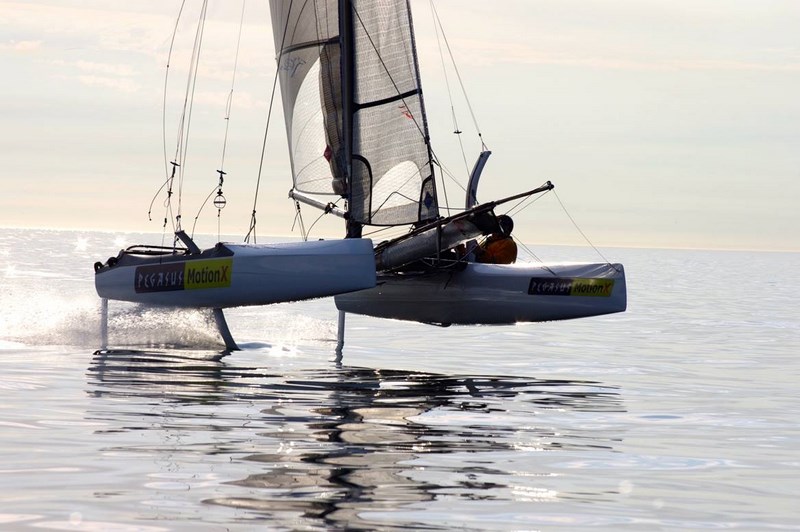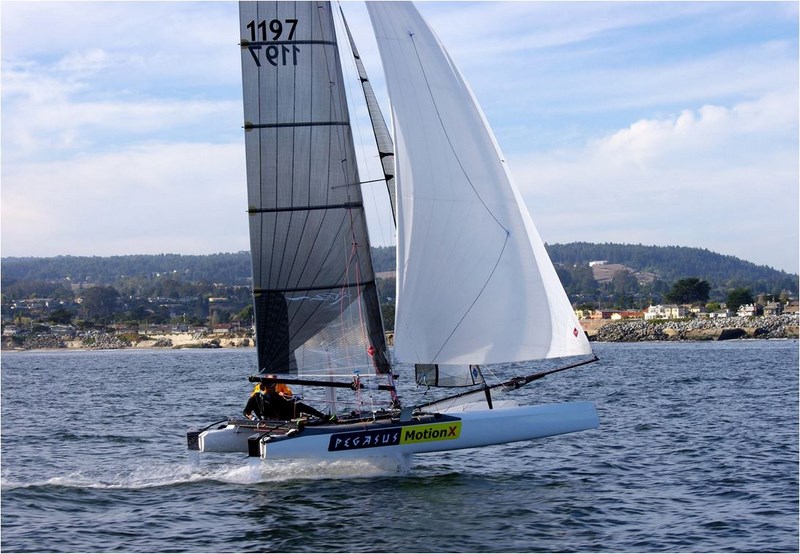Post from pressure-drop.us

The boys at Phillipe Kahn’s Pegasus Racing, not to be confused with the similarly named Port Townsend outfit, have upped their game in the foiling arena, modifying an F-20 Catamaran into a sweet flying machine.
“Flying MotionX Catamaran, Magic carpet, like riding champagne powder on a snowboard or skis. Highly recommended! It’s a carbon F20 expanded to foiling by Pete Melvin. This is a custom project, not a production boat. Far from it. An amazing experience. Not a simple retrofit kit.”
“50% more powerful than a F18 Phantom, longer, and 25% lighter. All carbon. Pete Melvin design. Hulls and mast before foiling setup (which is complex) similar to Nacra 20 Carbon. Top speed to date 30+ knots. Amazingly over-powered machine.”

” The Phantom is a modified F18. This is a quantum leap… They are awesome machines. We hope that others will start sailing. For now we are the first one and the only one. This is based of a carbon F20. Very stable, We sail in big wind and waves here. It gets challenging of course.
” I think that the Phantom is “purpose designed” but a derivation for the Phantom F18. Which is a great boat. I think that the Nacra infusion F18 is heavy and under-powered for justifying the extensive work that has to go into foiling. The crashes are all that much harder, impact goes up with the square of the speed. So crashing at 30 knots is more than twice as tough on the sailors and the equipment than crashing at 20 knots…. The foiling Phantom being a production boat may be a good choice. Our foiling F20 carbon is not a production boat.”
“If you start from a Nacra 20, you will need about 500 hours of boat building to get there and then some tuning. In the process you will need completely new rudders with foils and stronger yet light steering (greater and different forces), foiling foils (they look like the one soon the AC72s), and build into each hull new 3D adjusting foil cassettes. It’s quite involved and a lot of work to figure out how to have a stable ride on the foils. Specially in waves. It involves crashing etc… So count on spare masts, poles and some bruises. The AC72s had a full crew and the help of electronics to continually adjust angle of attack etc… Here there are only two of us on the wire handling all the sails and the whole foiling setup at high speed. No computers. Gradually we streamline and simplify the systems.”
Philippe Kahn